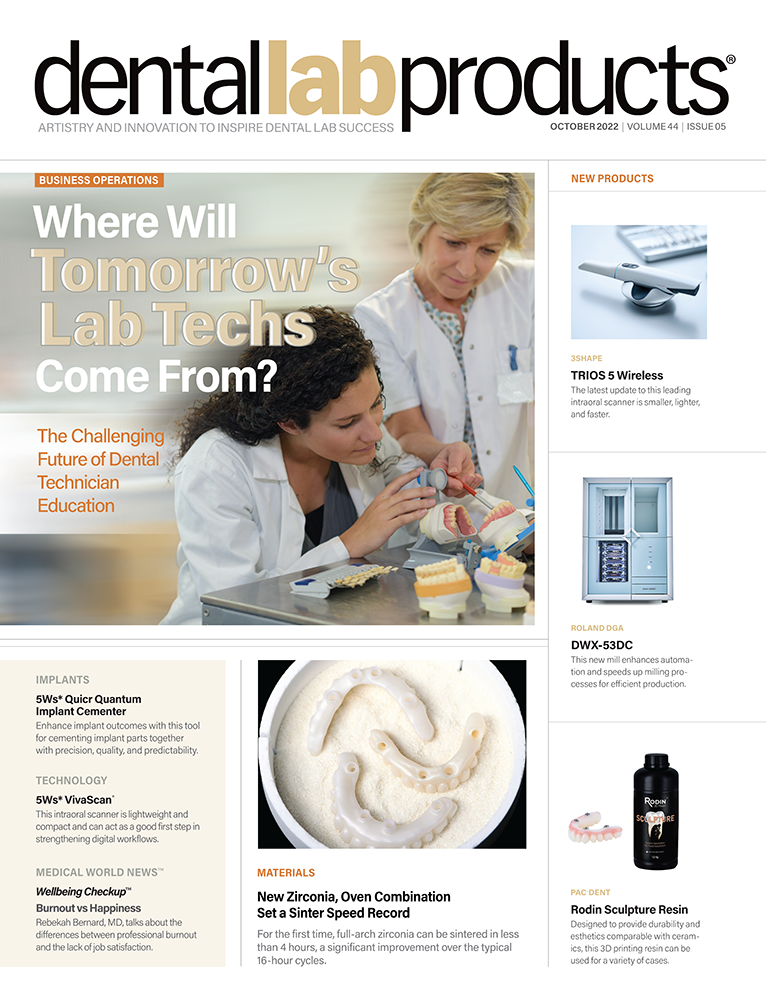The List: Top 6 Lab Technician Certifications and How to Earn Them
Although board certification is not required to become a dental technician, being certified can be a good career move. That is not to say that accreditation gives you more technical knowledge or talent than your peers who are not certified. However, becoming certified can be a step toward advancing your career and fine-tuning your skills. Here is a look at the different certification options open to dental technicians.
mark.f / stock.adobe.com

Certified Dental Technician (CDT)
The most basic certification for US-based lab technicians, a CDT requires a candidate to complete 3 examinations in any order within 4 years: a written comprehensive exam, a written specialty exam, and a hands-on practical exam in the same specialty.1 The comprehensive exam has 160 multiple-choice questions and the specialty written exam has 80.2 The goal of these exams is to measure mastery of knowledge and applied skills that lead to the successful practice of dental technology.
Master Dental Technician
Available at several universities across Europe, including Goethe University in Frankfurt, Germany, this program is designed for dental professionals seeking advanced qualifications in dental technology. Students develop their understanding of assessment procedures, planning, and evaluation of treatments requiring dental restorations.3 Additionally, dental technicians are trained to perform noninvasive treatment steps on patients.3 This course takes about 36 months to complete; graduates are awarded the degree of Master of Science (MSc) in dental technology.3
Master Dental Technologist
This certification is available through the American Society of Master Dental Technologists (ASMDT), which was founded in 1973 to provide higher levels of education for dental technicians.4 This program consists of 19 lectures covering anatomy, physiology, and hands-on practical maxillary-mandibular reconstruction cases.4 The course is designed mainly for hands-on learning, but video lectures are also available on the ASMDT website. The curriculum aims to motivate and educate while keeping students apprised of new procedures and technologies.
Registered Dental Technician (RDT)
An RDT is the basic credential for dental technicians in Canada. Although specific requirements vary by province, the Canadian Alliance of Dental Technology Regulators (CADTR) oversees 7 provincial regulatory bodies and provides evaluation and assessment services designed to support and assist aspiring dental technology professionals in becoming licensed.5 There are 3 main steps to receiving credentials through the CADTR:
- Credential processing: There are 2 requirements—credential verification and comparing your credentials to the minimum dental technology education standard in Canada, which includes experiential hours.5
- Competency assessment: The Dental Technology Entry-to-Practice Assessment measures the Canadian competencies required for entry to practice.5
- Register with a province: Apply to the dental technology regulator of the province in which you want to practice.5
American Academy of Cosmetic Dentistry (AACD) Accreditation
The AACD offers accreditation services for excellence in cosmetic dentistry.6 The process begins with a written exam; dentists and laboratory technicians are eligible to apply. The AACD requires the completion of accreditation and criteria workshops, a clinical case examination, and an oral exam.6 Upon completion of the written exam, applicants can only submit their cases after attending at least half of the annual AACD Scientific Session and 2 of the required workshops.6
References
- Certified dental technicians. National Board for Certification in Dental Laboratory Technology. Accessed September 22, 2022. https://nbccert.org/certificants/certified-dental-technician/
- Enhance your CDT. National Board for Certification in Dental Laboratory Technology. Accessed September 22, 2022. https://nbccert.org/certificants/certified-dental-technician/enhance-your-cdt.cfm
- M.Sc. in dental technology. Goethe University. Accessed September 22. 2022. https://www.goethe-dental-school.de/mdt
- ASMDT home study course. American Society of Master Dental Technologists. Accessed September 22, 2022. https://www.asmdt.com
- Becoming registered. Canadian Alliance of Dental Technology Regulators. Accessed September 23, 2022. https://cadtr-acortd.com/becoming-registered/
- AACD accreditation frequently asked questions. American Academy of Cosmetic Dentistry. Accessed September 23, 2022. https://aacd.com/AccreditationFAQs
